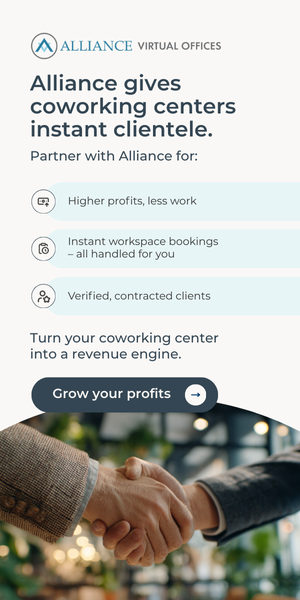- Assessing the building’s layout, tenant needs, and local market is crucial to ensure the space supports collaboration and attracts users like freelancers or startups.
- It is important to evaluate construction and operational costs against revenue projections while using a mix of services like private offices and open coworking areas to balance risks and returns.
- Designing user-friendly spaces with seamless navigation and diverse offerings, such as meeting rooms and virtual offices, helps meet tenant needs effectively.
In recent years, coworking spaces have gained traction as businesses and professionals seek flexible and collaborative environments.
For building owners or operators considering transforming a traditional office into a coworking space, thorough planning and strategic execution are essential.
Here’s a roadmap to ensure the transition is feasible, financially viable and aligned with market demands.
Feasibility: Can You Make It Work?
Physical Possibilities
Assess the building’s layout and structure to determine if a coworking model is viable. Open floor plans, adaptable spaces and adequate natural light are crucial components. Factor in design elements that promote collaboration and functionality, such as modular furniture, shared amenities and breakout areas.
Understanding Tenant Needs
Analyze your existing tenant base to identify their preferences and challenges. Are they seeking shorter, more flexible lease terms? Do they need shared amenities, conference rooms or a mix of private and open spaces? Gathering feedback can provide valuable insights into designing a coworking space that meets these demands.
Creating a Customer Journey
Designing a seamless customer journey within the building is vital. Can users easily access amenities, navigate the space and book resources? Consider technology solutions like mobile apps for room bookings and building access to enhance user experience.
Evaluating Market Demand
Understanding the local market is key. Assess the population density and business activity within a few miles of your location.
A coworking space within walking distance of restaurants, stores and gyms may be a more popular option for people.
Are there freelancers, startups or remote workers who would benefit from your coworking space? Identify what potential users value most—whether it’s short-term booking options, private offices or amenities like high-speed internet and wellness areas.
Financial Feasibility: Making the Numbers Work
Cost Considerations
Start by evaluating the cost of owning or renting your building and the expenses associated with the buildout. This includes construction, design and furnishing costs.
Revenue Potential
Research the market rates for coworking services in your area. Multiply these rates by the potential capacity of your space to estimate revenue. Keep in mind that pricing should reflect the value of your offerings, including amenities, location and services.
Operational Costs
Account for ongoing expenses such as staffing, technology and utilities. Ensure these costs align with your revenue projections to achieve profitability.
Selecting Space Types and Services
Based on feasibility and market demand, decide on the mix of services and spaces to offer. Options include:
- Spec Suites: Fully built-out spaces for longer-term tenants.
- Private Offices: Short-term leases for individuals or small teams.
- Meeting Rooms: Spaces for hourly or daily bookings.
- Reserved Desks and Open Coworking Areas: Flexible options for individuals.
- Virtual Offices and Concierge Services: For remote users seeking a professional address and support.
Balancing Costs and Risks
Higher-cost offerings, like spec suites, carry more risk but can yield significant returns with long-term commitments. Lower-cost options, such as open coworking, appeal to a broader audience but require scale to be profitable.
Understand the dependencies between services — for example, meeting rooms and private offices may require shared amenities to attract users.
Conclusion
Transforming a traditional office into a coworking space is a multifaceted process that requires careful consideration of physical, tenant, market and financial feasibility.
By understanding local demand, optimizing the space design and strategically selecting service offerings, you can create a coworking space that thrives in today’s dynamic work environment.
Click below to find out how Yardi Kube coworking software can help you with this transition and to better manage your coworking space.


 Dr. Gleb Tsipursky – The Office Whisperer
Dr. Gleb Tsipursky – The Office Whisperer Nirit Cohen – WorkFutures
Nirit Cohen – WorkFutures Angela Howard – Culture Expert
Angela Howard – Culture Expert Drew Jones – Design & Innovation
Drew Jones – Design & Innovation Jonathan Price – CRE & Flex Expert
Jonathan Price – CRE & Flex Expert











